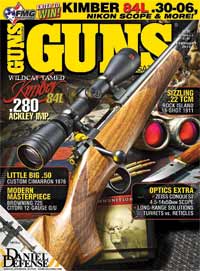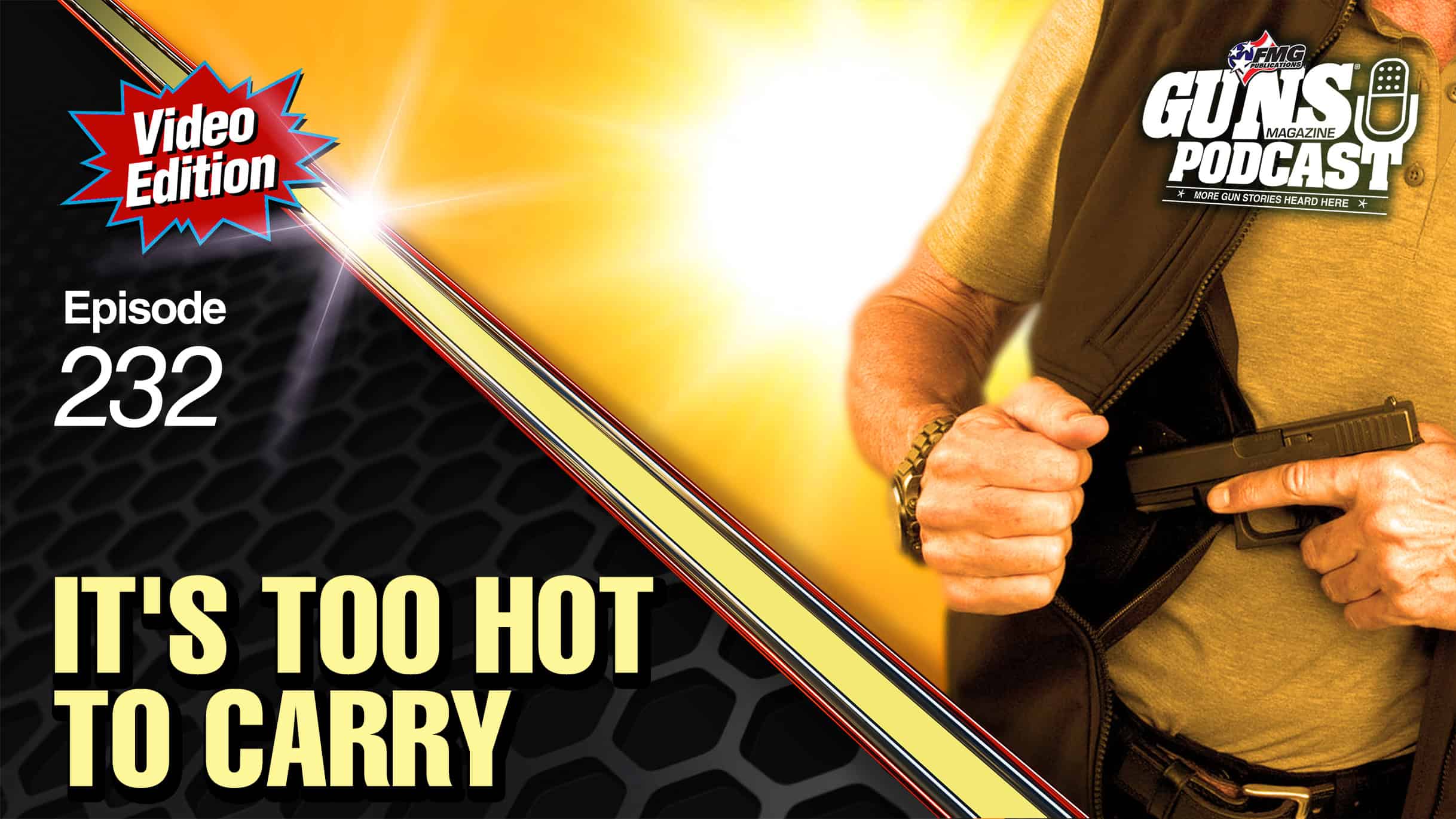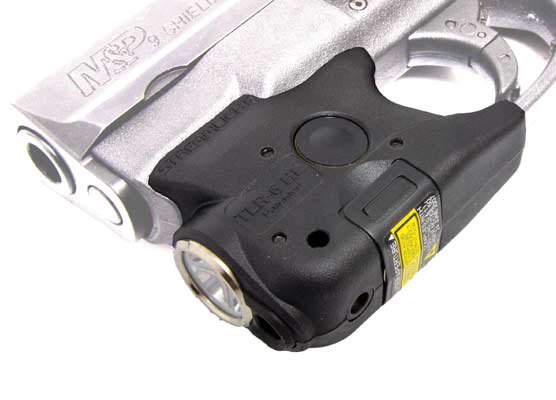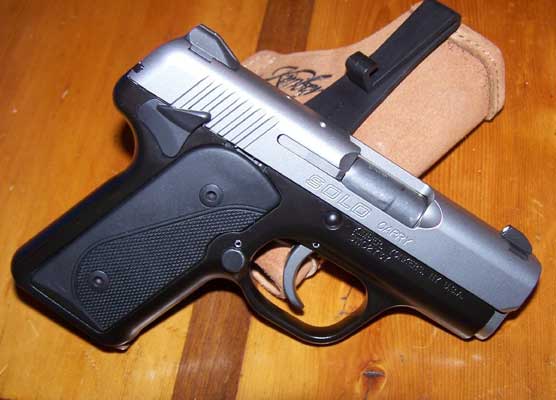| Shooter's Edge |
0
Benchrest shooting and offhand shooting are at opposite ends of the shooting spectrum. Benchrest shooting is deliberate and precise, intended to wring as much accuracy as possible from the shooting system. Offhand shooting is more suitable to “good enough” accuracy, as in good enough to hit the intended target in a short time span.
This discussion is about offhand shooting as a practical skill for the big-game hunter. Competition shooters use a standing position, which has been rigorously developed to form a steady firing platform. The level of accuracy a really good competitive shooter can achieve standing is a marvel.
The competition standing position is seldom seen in the field. It could be, certainly, but if there is time to settle into the competitive standing stance there’s likely time to use a sitting or prone position, or find an improvised rest.
The primary advantage of shooting offhand is speed. It is useful when still-hunting, when opportunities to shoot come quickly and at close to moderate range. It’s a good skill to have when following up wounded game.
Offhand shooting isn’t as difficult as it may seem at first. Actually what is hardest to overcome is the mental shift from “extreme” accuracy to “acceptable” accuracy, achieved in a short time frame. A 1″ group at 100 yards from the bench with current equipment really isn’t too difficult. A 6″ group fired offhand at 100 yards won’t impress anyone, but it should. It’s even more impressive if a shot timer was used, with the shooter starting holding the rifle from a ready position, with each shot in the group within 5 seconds of the start buzzer.
The photographs illustrate the offhand stance better than words. I’m assuming a right-hand shooter in these descriptions. The shooter stands roughly quartering to the target, with the left leg forward. I like to have the support hand about midway on the forearm of the rifle. It is stable yet allows the rifle to be swung smoothly for a running shot.
I also like to have the support arm elbow more or less directly under the rifle, so the rifle’s weight is primarily supported by the muscles of the upper arm rather than by those of the forearm and wrist.
Old military manuals often show the shooting arm elbow elevated about to the level of the ear, if not higher. Just how this high-elbow stance originated, or why, I’ve never been able to ascertain. I like the shooting side upper arm high enough to create a comfortable shoulder pocket for the rifle.
These are just suggestions. I’m not at all dogmatic about minor details of stance. I like the support arm to be underneath the gun. One of my shooting buddies holds the support arm well out to the side. To me it doesn’t look right, but the guy is an outstanding shot.
I believe in results rather than appearance. What you want to develop is a stance, which is comfortable for you. If it is comfortable and natural, it is repeatable. Repeatability leads to consistency, and consistency leads to accuracy.
Now what you may not want to hear: there are no shortcuts. Learning offhand shooting takes practice and lots of it. On the positive side it doesn’t have to cost much. Dry fire doesn’t cost anything but time. It is a superior training method in some ways, since there is no recoil to mask (or induce) bad habits. If dry fire gets boring, a .22 rimfire and some metallic targets liven up the process considerably.
For each shot, start from a ready position, i.e. rifle held in both hands, safety engaged, trigger finger outside triggerguard. Smoothly bring the rifle to your shoulder and as the sights roughly index on target release the safety and place the trigger finger on the trigger. Refine the sight picture and smoothly press the trigger to fire the shot.
Mentally call the shot, retaining a mental picture of exactly where the sights were as the shot broke. Operate the action to chamber a fresh cartridge, engage the safety, and return to the ready position.
Don’t consciously rush any of these steps. Keep it smooth, and with many repetitions speed will come. What’s good? If you can hit a 6″ target every time at 100 yards, in a time span of 5 seconds from ready position to the shot, you’re a good offhand shooter. Do it in 3 seconds per shot and you are a whole lot better than just good.
You may well hunt a whole lifetime and never fire an offhand shot at game. But it is comforting skill to have—just in case.
By Dave Anderson
Here’s how Dave holds a rifle for offhand shooting. The right elbow is high enough to
form a comfortable shoulder pocket for the rifle stock. Dave likes the support arm to be
fairly close to vertical so primarily the muscles of the upper arm hold the weight. Rifle
is an Ed Brown Damara 7mm-08 with 2.5-8X Leupold scope.
Dave likes to have the support hand holding the rifle at about the middle of the forearm.
It gives good support along with enough mobility to make fine adjustments while aiming,
and to swing the rifle smoothly for running shots. Rifle is Ruger 77 Hawkeye .223
with Leupold Mk 4 3.5-10X scope.
David Tubb is one of the greatest riflemen of all time. In these two photos he
demonstrates the difference between the standing position he uses in
competition and the hold he uses for offhand shooting while hunting.
Note the offhand position has the support hand well out on the forearm and more
of a weight-forward stance. David posed these positions for me in his yard, be assured
when actually shooting he uses eye and ear protection. Rifle is the superb Tubb 2000.

Download A PDF Of The GUNS Magazine February 2013 Issue Today!


